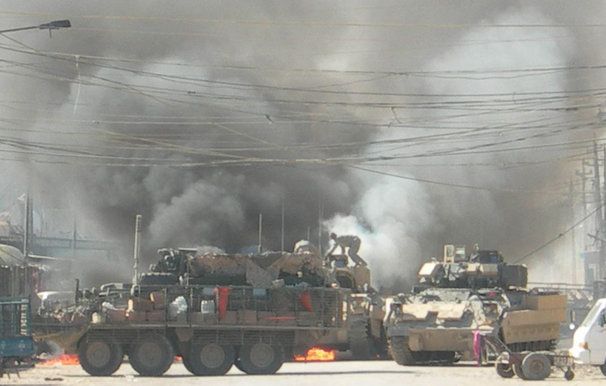How Self-Sealing Fuel Tanks Could Protect Armored Vehicles

Tank crews have long been afraid of burning alive inside their armored vehicles — the U.S. Sherman tank earned its "Ronson" nickname during World War II as a dark reference to a popular cigarette lighter slogan, "lights the first time." That had more to do with spare ammo exploding rather than combustible fuel tanks, but today's U.S. military wants vehicle fuel tanks that can protect themselves in even the fieriest circumstances.
In that spirit, the U.S. Naval Surface Warfare Center has issued a call for a self-sealing fuel tank that both can stop fuel leaks and put out fires. It envisions a technology capable of plugging any damage caused by roadside bomb explosions or armor-piercing bullets, preventing fires caused by small explosions and surviving close contact with a burning pool of fuel.
Any such technology must be applicable to the existing fuel tanks of tactical wheeled vehicles ranging from Humvees to Stryker armored vehicles, according to the document posted on Feb. 7. But it could take the form of several protective coatings, rather than just one ideal self-sealing coating.
The list of threats that the self-sealing coat must protect against include fragments from 20 mm cannon shells and 50 caliber armor-piercing bullets fired from heavy machine guns. Tests would take place at the Army Research Laboratory in Aberdeen, Md.
This story was provided by InnovationNewsDaily, a sister site to LiveScience. Follow InnovationNewsDaily on Twitter @News_Innovation, or on Facebook.
Sign up for the Live Science daily newsletter now
Get the world’s most fascinating discoveries delivered straight to your inbox.











